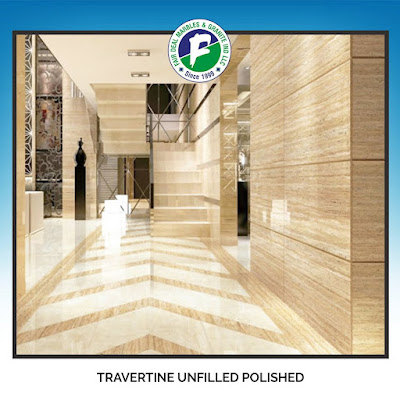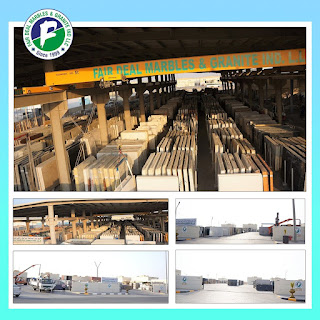5 Reasons to Choose Marble Polishing over Marble Sealing
Introduction
Marble
can be a finicky surface that requires “special care” to keep it looking as
beautiful as it did on the day it was installed, but what is that special care,
and what is marble sealing versus marble polishing? Are they really so
different? We’ll try to tackle that question in this blog post.
Marble Polishing vs Marble Sealing
Marble polishing and marble sealing are two of the most common marble maintenance services. However, the differences between these two services are often misunderstood. Skilled and experienced marble suppliers in Sharjah define marble polishing as the process by which the natural lustre of the marble is restored, giving it a highly reflective surface. Polishing also includes other types of cleaning, such as dusting and removal of stains from marble.
Marble sealing is sealing the pores in the marble to protect it from water damage and other forms of damage caused by external factors that can be detrimental to your marble countertops. The sealant will fill in the pores and make it harder for stains or water damage to get in.
Polishing
removes blemishes while sealing protects the marble from future damage and
marks. So we would say that, the best way to keep your marble looking great is
by combining both polishing and sealing services. But let’s look at why we push
for polishing over sealing.
Reasons Why You Should Choose Marble Polishing over Sealing
- Marble
Polishing Is More Cost-Effective Than Sealing
Although sealing may seem cheaper upfront, you'll find that the maintenance costs for sealed marble are significantly higher than for polished surfaces. This is because polishing can last for years without any further treatment, while sealed marble will begin to show signs of wear after just a few months.
Polished marble is ideal for high-traffic areas because it has a consistent appearance with no shiny spots or streaks. Sealing requires additional maintenance and reapplication every 1-2 years depending on wear and tear. Therefore, a polished marble floor will not develop unsightly stains as easily as sealed marble because it has been treated with a special type of wax that repels water and other substances that cause staining on porous surfaces like granite or limestone (these materials will still need periodic cleaning).
The best marble supplier in Sharjah advocates that sealing your marble can be very expensive and time consuming, especially if you want the best results. Polishing is much quicker and easier than sealing, which means that you will save both time and money when choosing this method over sealing your marble.
- Marble
Polishing Enhances the Beauty of Marble
The main reason why many people choose to polish their marble floors as opposed to sealing them is that polishing enhances the beauty of marble. When you seal a marble floor it can make your floor look dull and lifeless. This is because when you seal a floor you put a thin layer of protection over your marble which hides its natural beauty.
When you choose to polish your floors instead you are actually removing any dirt or stains from them so they look clean and shiny again. This gives your floors a much better appearance than if you simply sealed them and left them looking dull.
- Marble
Polishing Prevents Damage to The Stone
The polishing process done by preeminent marble & granite manufacturers & suppliers in UAE like Fair Deal restores the original lustre and shine of marble. This is done by removing a small amount of surface material using diamond abrasives to bring back the natural glow of the stone. By contrast, sealing hides scratches, but it does not remove them. Sealing also reduces the risk of further damage from occurring, but only if it is done properly.
- Marble
Polishing Resurfaces The Stone
The process requires the use of a non-abrasive compound which is applied to the surface of the marble and then buffed off to reveal a new, smooth surface. It can be done on any type of marble, including polished, honed, or tumbled (brushed).
There are two types of polishing processes: wet and dry. A wet polish is similar to buffing your car with an orbital buffer. It produces a high-gloss shine and leaves no residue behind once it has been completed. A dry polish differs by using a finer grit compound that does not leave any residue behind when buffing off the stone.
Dry polishes work better than wet polishes because they do not remove any material from the stone when you are polishing it down. Wet polishes will remove some material from your stone during the buffing process which may cause some staining or discoloration if not done correctly or carefully enough.
Resealing the stone will not resurface it but protect it against staining. After resealing, your marble will still look dull and scratched since the sealer just covers up scratches in the surface of the stone, not the actual surface itself.
- Marble
Polishing Can Remove Scratches
Scratches are often caused by improper maintenance or by using chemical cleaners or abrasive cleaning products on your marble surfaces. Sealing does not remove scratches, but marble polishing can do so by removing just enough material to correct them.
However, it is important to note that you should never attempt to polish away deep scratches; instead, you should consult with an experienced professional at Fair Deal, a leading supplier of Natural Stones in UAE who knows what tools and techniques work best with various types of marble.
- Marble
Can Develop Staining Problems Under its Seal
Marble polishing involves the use of a diamond grinding wheel to remove the marble surface and expose the natural beauty of the stone. Polishing will remove any previous sealer or polish, therefore exposing any hidden imperfections in your marble.
These imperfections may include stains, scratches, chips and other defects that were not visible before the sealer was applied. If you are unsure whether or not your marble has been sealed, ask your installer before proceeding with polishing.
- Marble
Sealing Can Cause Damage to Grout, Tile and Surrounding Surfaces.
The
sealer used on marble countertops is designed to keep them looking like new for
years to come. Unfortunately, this means that if you try to remove it at any
point in time in the future, you may find yourself with ruined grout or
counters because of what happened when it was first applied in your home. You
could also end up damaging surrounding surfaces like cabinets and walls as well
as flooring if you don't know what you're doing when trying to remove it from
your home.
Marble Polishing Performed by Professionals Outdoes Marble Sealing
Ultimately, marble polishing is a much more effective and thorough method for cleaning and maintaining your marble countertops. Not only does the trickling water from our specially designed machine travel underneath the surface of your marble like a vacuum, but our superior-quality compounds get rid of dirt and stains on an even deeper level.
We
believe that this makes your marble look better in the short term, as well as
in the long term. In other words, you're doing yourself a favour by putting
your trust in our specialists in marble cutting & polishing in Sharjah, UAE. Explore more about natural stone cutting
and polishing by visiting Fair Deal’s website: www.fairdealuae.org or
our factory at Emirates Industrial City-Sajja in Sharjah-United Arab Emirates,
call us to get the directions: +971 6 534 3255.




Comments
Post a Comment